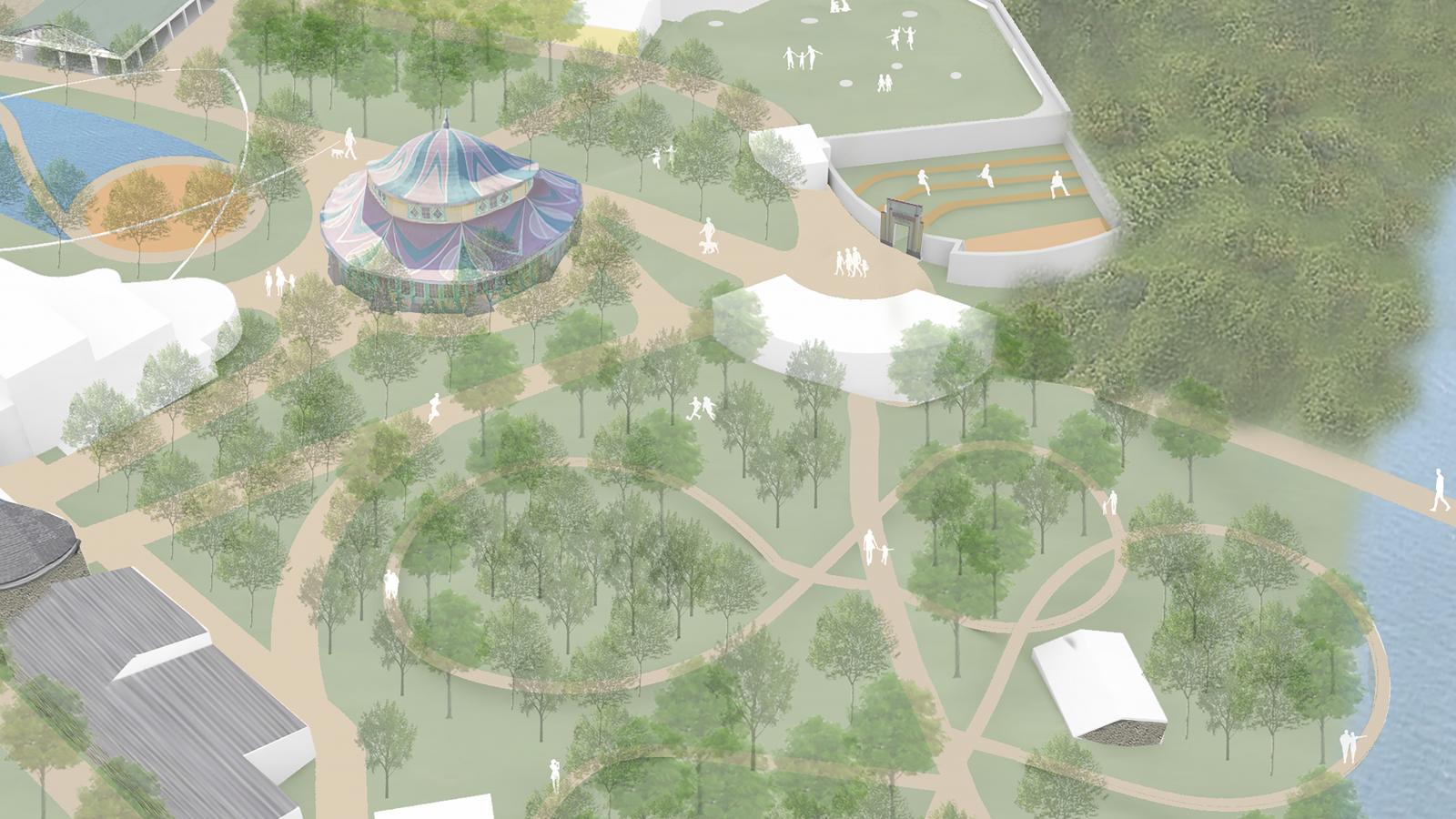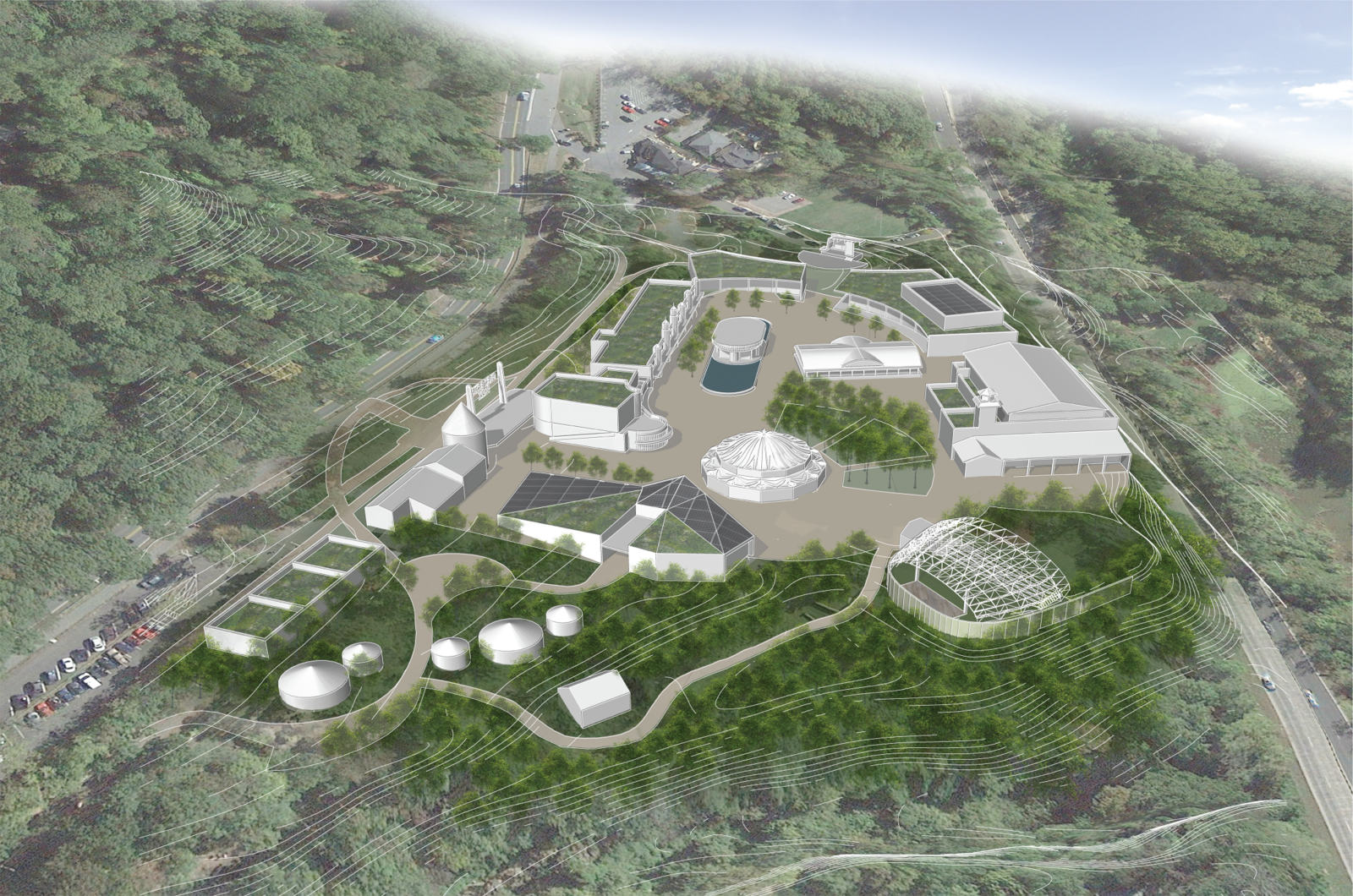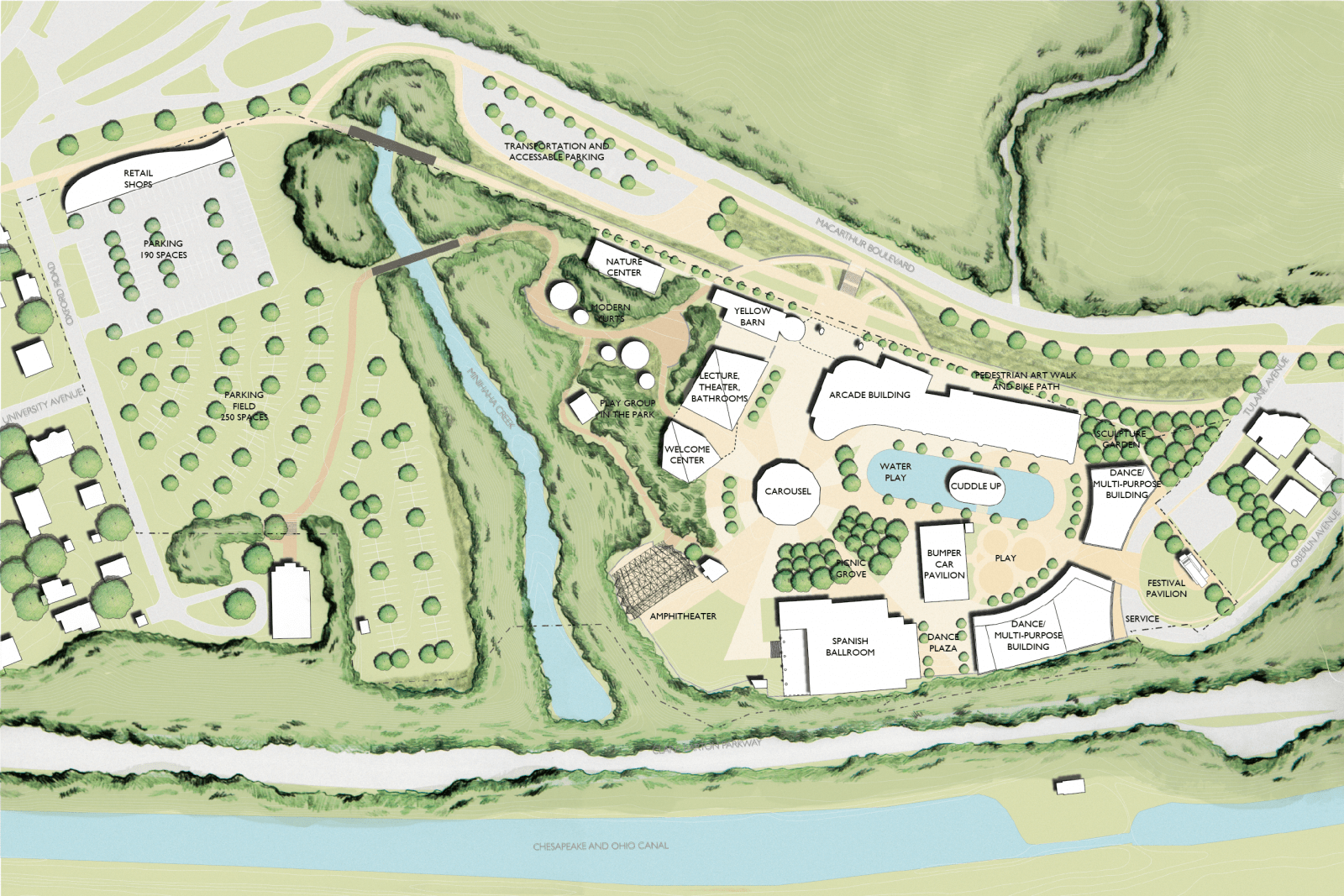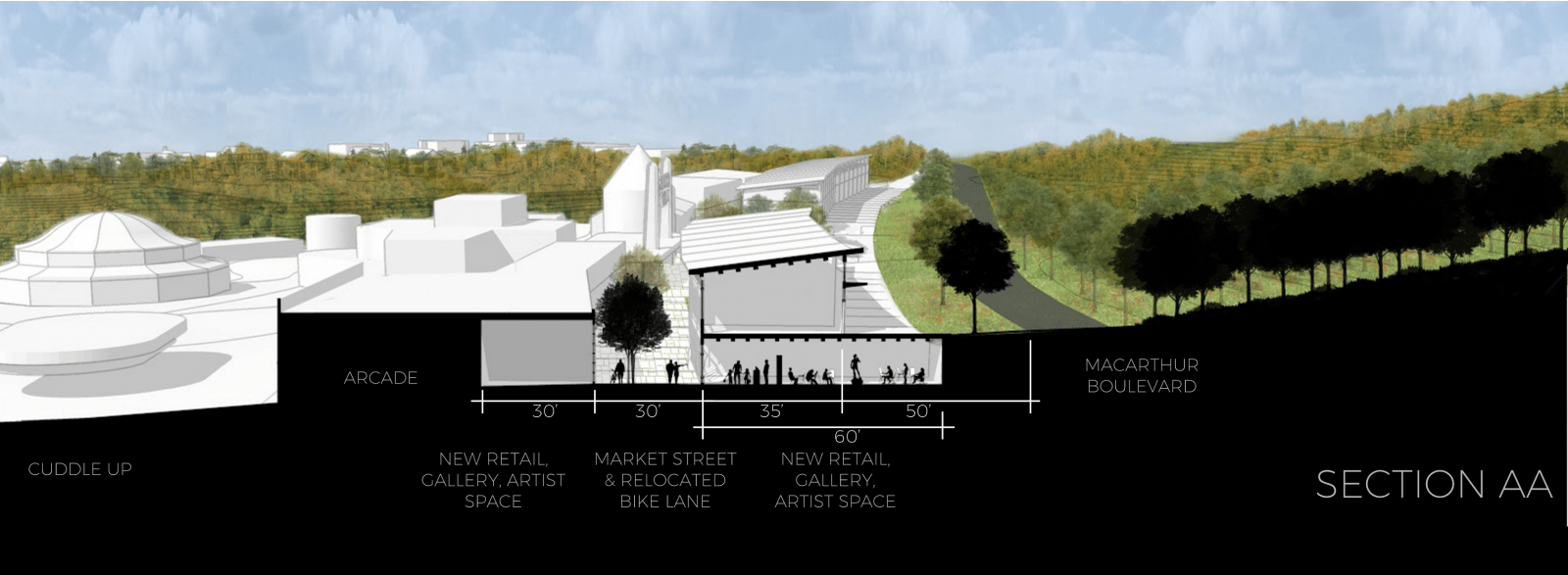Architecture students re-visit Glen Echo’s history to re-imagine its future
During the 1930s and 40s, Glen Echo Park was a Washington destination. Connected to D.C. by trolley and to Maryland and Virginia by car, throngs of families and young people flocked to the park to ride its roller coaster, swim and dance each weekend. Glen Echo Park is tethered to a storied history that goes beyond its identity as an amusement park, including its early days as a national Chautauqua and its role in the Civil Rights Movement; segregated for the majority of its early existence, the park was desegregated in 1961, just a few years before closing in 1968.
Today, Glen Echo’s history is largely evoked through its architecture; only a portion of the park is actively used now, with most of its beautiful, art deco buildings standing empty, as haunted relics of a complicated past and vast potential. In reimagining a new future for the historic park, the Glen Echo Partnership for Arts and Culture recruited students from the University of Maryland’s architecture program to conceive a new park master plan, with an eye towards reigniting its arts and culture for the next generation. The project was part of Associate Professor Madlen Simon’s Graduate Studio, ARCH 601, which ran this spring.
“There is so much density at Glen Echo that’s not utilized,” said Irena Savakova, a UMD Architecture alum and director of design for Leo A. Daly, who consulted on the project. “In talking with the task force about the master plan, approaching this project within an academic environment was really intriguing. We know we can bring more arts and activity while preserving the integrity and history of the site, and felt the students would inject some fresh ideas.”
Through three distinct master plan options, students aimed to invent a new narrative for Glen Echo while reviving the architectural integrity, a formidable task. Years of sporadic maintenance have taken their toll on the park; while sporting an updated façade, the interior of the Crystal Pool is ruined and the south side of the park is an unkempt maintenance area. In addition to upkeep issues, Glen Echo has seen no upgrades to attract audiences; there is no welcome point to the park, nor wayfinding system once you arrive, adding to its haunted amusement park feel. The students worked with the board, professional mentors and Professor Simon to bridge three distinct objectives: preserve and utilize original historic buildings in new ways; address contemporary issues, like stormwater runoff, to increase the park’s environmental stewardship; and develop new connections and buildings that will support dynamic programming and increase the park’s economic sustainability. Central to each scheme was a goal of creating magic and wonder for visitors.
“We encouraged the students to express the wonder and magic of Glen Echo as they imagined multiple possible features for the park,” said Simon. “Glen Echo Park is a palimpsest layered with multiple histories, so master planning must reveal the past while addressing current realities and speculating about the future.”
True to the directive, the master plan ideas range from innovative to downright whimsical. In one version, the Crystal Pool is re-envisioned as an amphitheater. Another recreates the panoramic views seen from the heights of the park’s rollercoaster in the 1940s and 50s through a series of elevated, looping pathways. Additional buildings and landscape foster enhanced programming for a diverse audience—from families to singles and seniors—that capitalizes on Glen Echo’s history of dance, theatre, art and play. The client’s strong desire to be a “dance destination” for the region was conceptualized in new and accentuated studio and exhibition space, and complemented with restaurants and park boulevards to create a district feel. In addition, more practical concerns, like storm water mitigation and wayfinding were addressed by modifying site conditions, adding environmental features like bioswales and green roofs and improving support spaces.
“This idea of re-envisioning Glen Echo has been percolating for a few years, but as a small non-profit group, money is tight,” explained Christopher Fromboluti, member of the Board of Directors and Chair of the Master Plan Committee, who was instrumental in bringing UMD on board. “The students have brought forth a lot of interesting ideas, and a lot of things we had never thought about.”
The three plans were presented to the Glen Echo board earlier this month. With the studio complete, the board will begin discussions with the National Park Service, the National Capitol Planning Commission, community groups and stakeholders, which will likely take six months. Savakova expects that once the key decision makers select their favorite ideas, a final masterplan will be commissioned and developed. She hopes that the studio leads to more engagement with the architecture program next spring with the development of a new building design study, which is proposed to be included as part of the final masterplan proposal scope.
Learn more about the history of Glen Echo.





